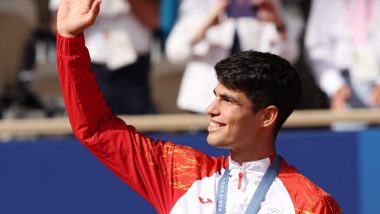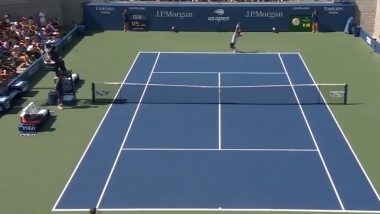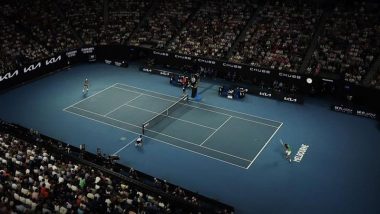Washington, Aug 2 (AFP) New serve and warm-up clocks that debuted in ATP and WTA main draws this week received generally good reviews from players, although hurried warm-ups cut into music time for some.
The serve clock gives players 25 seconds to begin their service motion from the time the chair umpire announces the score.
The warm-up clock allows one minute from on-court arrival to get to the net, five minutes for warming up and another minute to get ready to play.
"It's a positive change for tennis," three-time Grand Slam champion Andy Murray said after his first-round match at the Washington Open.
"It's one of those things in tennis that's so stupid. How are you supposed to count 25 seconds in your head?"
While umpires have some discretion, the clock assures players and umpires are on the same wavelength when it comes to measuring the gap, with ball bouncing and gestures not counted as starting a serve motion.
"It was great. I don't feel any pressure," said three-time Grand Slam champion Stan Wawrinka.
"You still have a lot of time and it's good for the game. For sure you look (at the clock) but you're always early compared to the umpire."
The biggest complaints came from two 20-year-old rising stars, Japan's Naomi Osaka and American Frances Tiafoe.
But it wasn't about the serve clock. It was about one-minute countdown from walking out to getting to the net for the coin toss.
For players accustomed to a more leisurely pace in their teen years, it's tough to take off the headphones and leave behind their music so quickly.
"It's good. I think it would be well to speed it up. Some guys definitely take their time, move bottles around. But long matches are still going to be long matches," said 41st-ranked Tiafoe.
"The minute to walk on, I don't like that. I had to take my headphones off so I didn't get fined there."
Osaka, ranked 17th, was listening to Kendrick Lamar ahead of her opener when she realized she needed to get moving.
"The most panicky thing for me is the minute you have to get to the net for the coin toss. It cut into my music," she said.
"I usually listen to music all the way to the bench and I had to stop half way. I was a little upset about that."
Reigning US Open champion Sloane Stephens said it will take some time to adapt to the clock, especially in tight situations.
"It's a little weird. You have to pay attention," Stephens said.
"When you're 6-6 in the third set of a close match you don't want to look at a clock. But it is what it is. Hopefully everyone will adjust well."
Japan's Kei Nishikori, the 2014 US Open runner-up, knows he will have less time to decide where he wants to go with serves and to formulate strategy between points.
"For myself, it's not going to be easy," he said. "I'm not going to have time to think much about where to put my serve. I won't have much time to think between the points and with the heat it's going to be a little bit tough."
- Helps 'stronger' player -
===========================
Germany's Andrea Petkovic, a 2014 French Open semi-finalist, said she adapted quickly after some nervous moments at the start.
"I like it. It does speed up the game," she said. "I got ready a little quicker than I used to. It did stress me out a little bit first match. In the beginning I was looking at it all the time. When I realized I was doing fine, it relaxed me."
She wouldn't mind seeing it in every event, although it will only be used in the US Open and tuneup events this year, with consideration for a wider rollout in 2019.
"I think it would be a good thing," Petkovic said.
"It brings an edge to it and makes it more physical. I think it favors the physically stronger player." (AFP) ATK
(This is an unedited and auto-generated story from Syndicated News feed, LatestLY Staff may not have modified or edited the content body)













 Quickly
Quickly




















